Abstract
A new set of European genetic data has been analyzed to dissect independent patterns of geographic variation. The most important cause of European genetic variation has been confirmed to correspond to the migration of Neolithic farmers from the area of origin of agriculture in the Middle East. The next most important component of genetic variation is apparently associated with a north-south gradient possibly due to adaptation to cold climates but also to the differentiation of the Uralic and the Indo-European language-speaking people; however, the relevant correlations are not significantly different from zero after elimination of the spatial autocorrelation. The third component is highly correlated with the infiltration of the Yamna ("Kurgan") people, nomadic pastoralists who domesticated the horse and who have been claimed to have spread Indo-European languages to Europe; this association, which is statistically significant even when taking spatial autocorrelations into account, does not completely exclude the hypothesis of Indo-European as the language of Neolithic farmers. It is possible that both expansions were responsible for the spread of different subfamilies of Indo-European languages, but our genetic data cannot resolve their relative importance.
Full text
PDF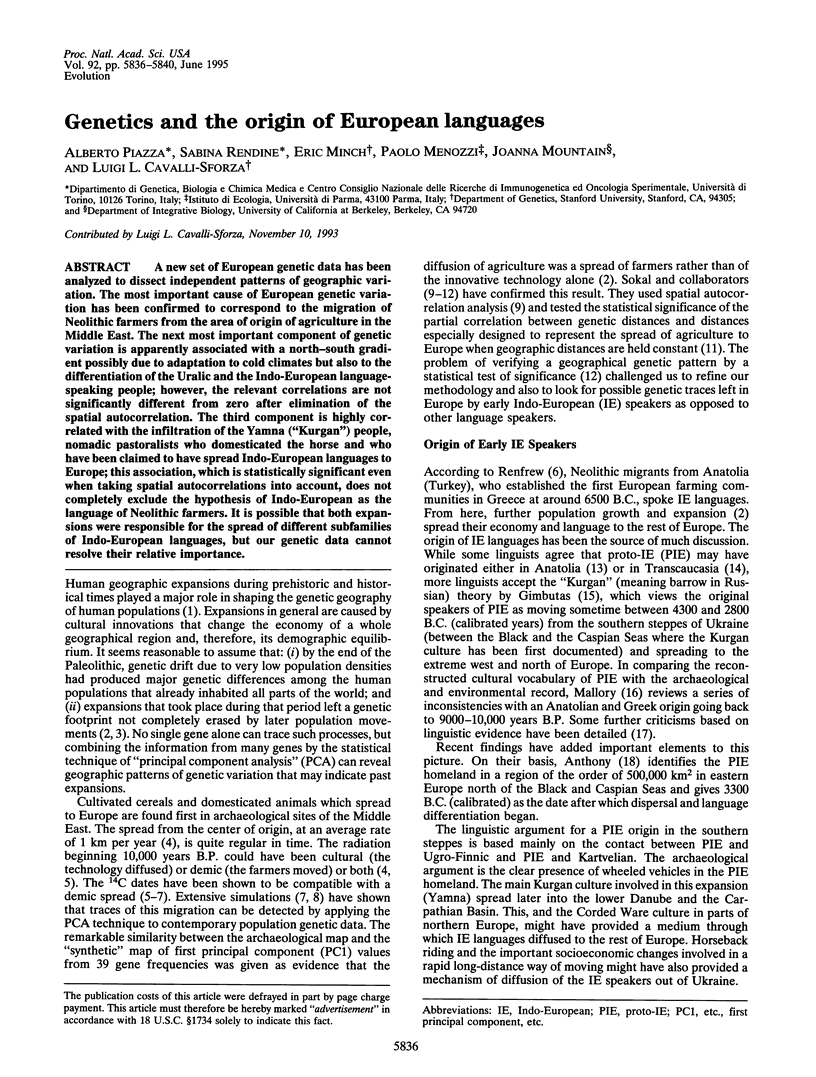
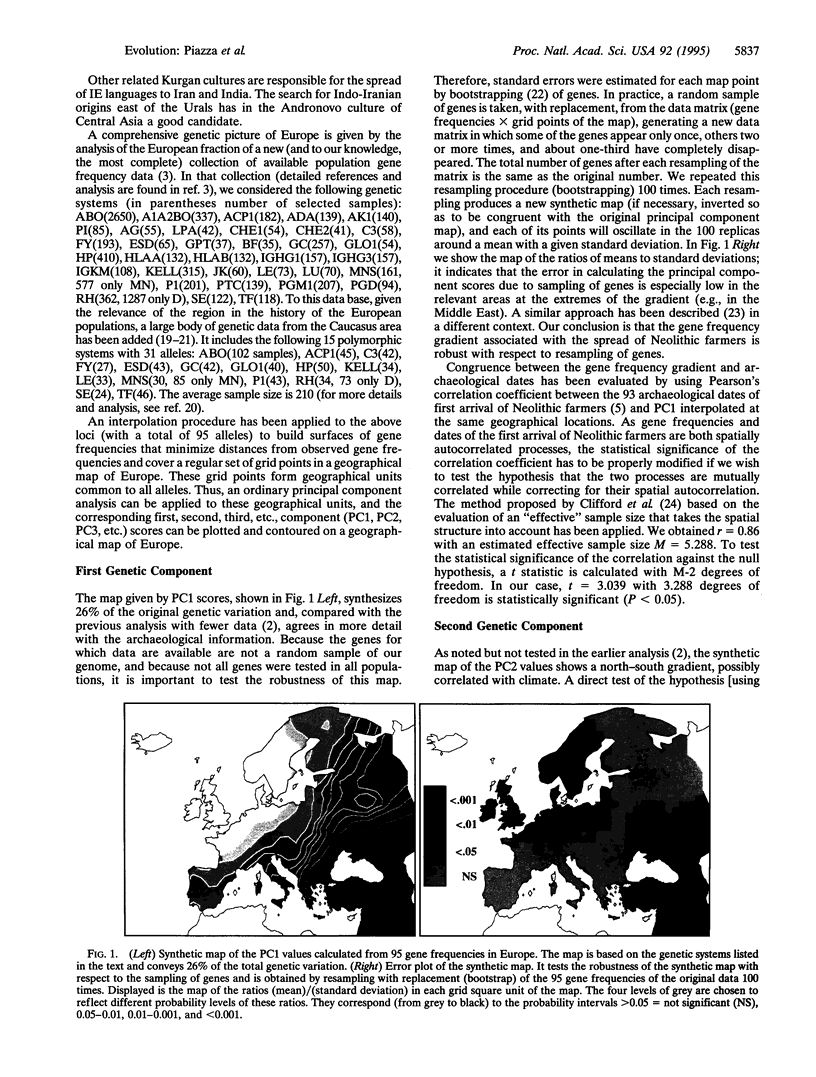
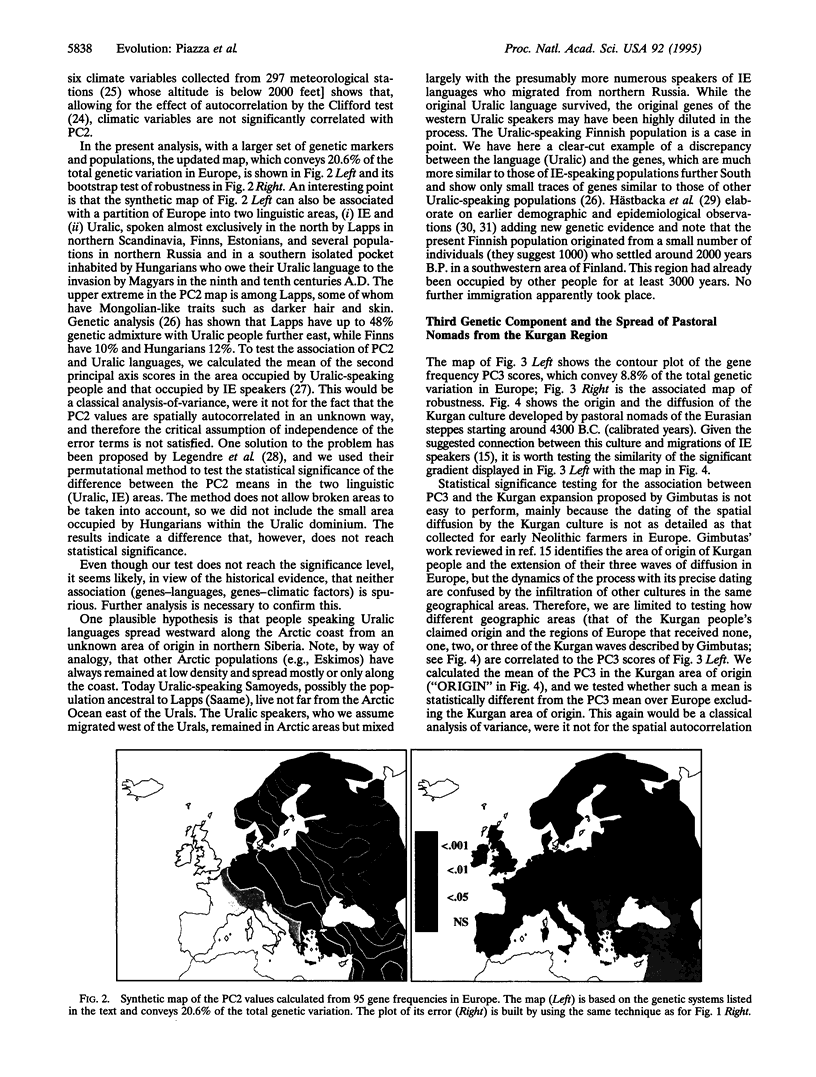
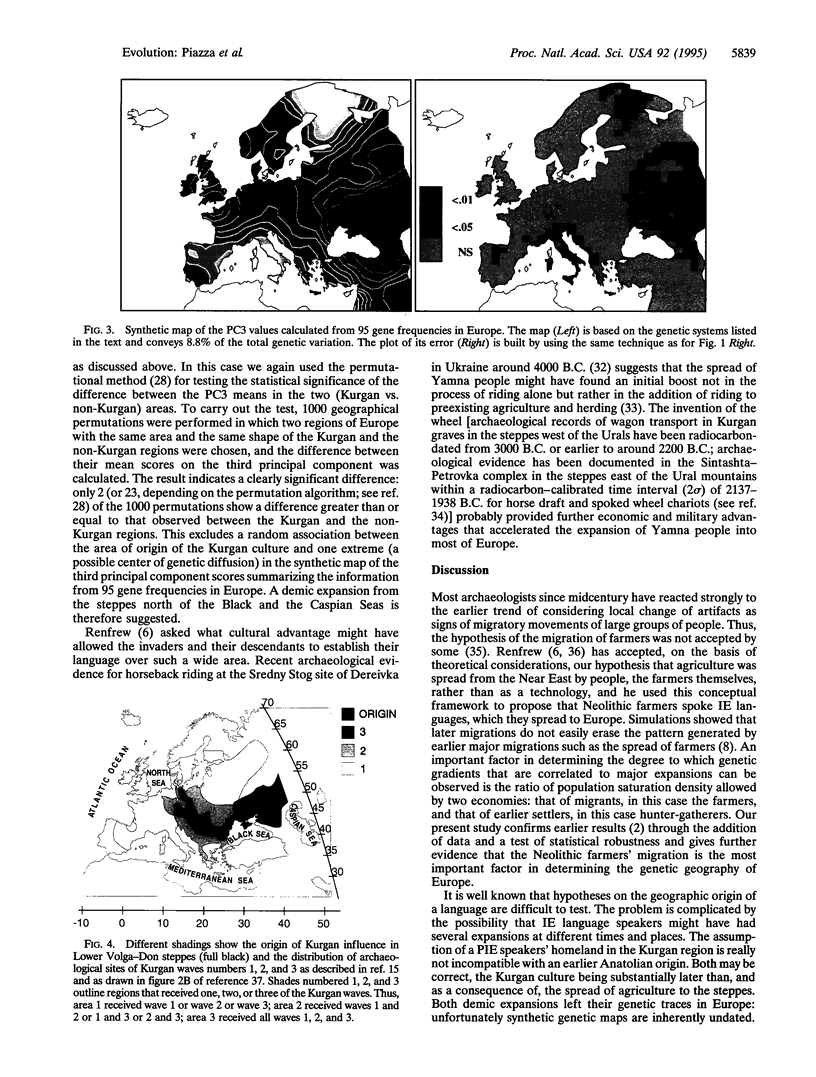
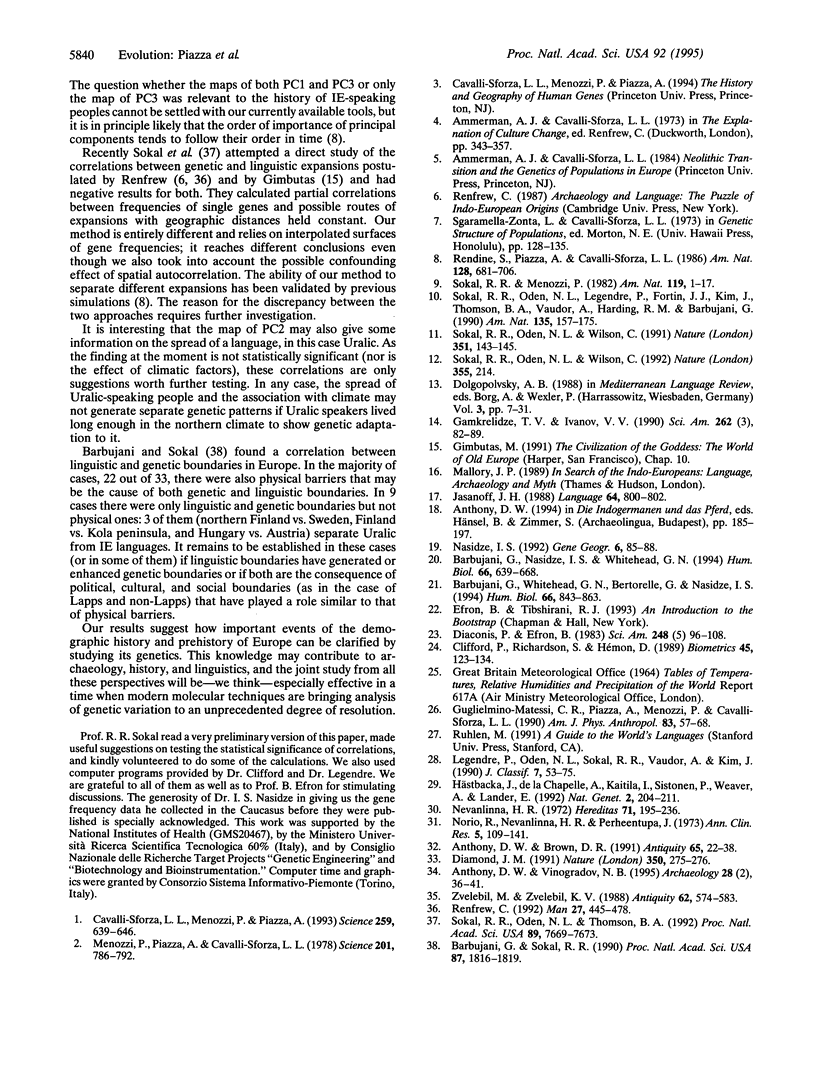
Images in this article
Selected References
These references are in PubMed. This may not be the complete list of references from this article.
- Barbujani G., Nasidze I. S., Whitehead G. N. Genetic diversity in the Caucasus. Hum Biol. 1994 Aug;66(4):639–668. [PubMed] [Google Scholar]
- Barbujani G., Sokal R. R. Zones of sharp genetic change in Europe are also linguistic boundaries. Proc Natl Acad Sci U S A. 1990 Mar;87(5):1816–1819. doi: 10.1073/pnas.87.5.1816. [DOI] [PMC free article] [PubMed] [Google Scholar]
- Barbujani G., Whitehead G. N., Bertorelle G., Nasidze I. S. Testing hypotheses on processes of genetic and linguistic change in the Caucasus. Hum Biol. 1994 Oct;66(5):843–864. [PubMed] [Google Scholar]
- Cavalli-Sforza L. L., Menozzi P., Piazza A. Demic expansions and human evolution. Science. 1993 Jan 29;259(5095):639–646. doi: 10.1126/science.8430313. [DOI] [PubMed] [Google Scholar]
- Clifford P., Richardson S., Hémon D. Assessing the significance of the correlation between two spatial processes. Biometrics. 1989 Mar;45(1):123–134. [PubMed] [Google Scholar]
- Guglielmino C. R., Piazza A., Menozzi P., Cavalli-Sforza L. L. Uralic genes in Europe. Am J Phys Anthropol. 1990 Sep;83(1):57–68. doi: 10.1002/ajpa.1330830107. [DOI] [PubMed] [Google Scholar]
- Hästbacka J., de la Chapelle A., Kaitila I., Sistonen P., Weaver A., Lander E. Linkage disequilibrium mapping in isolated founder populations: diastrophic dysplasia in Finland. Nat Genet. 1992 Nov;2(3):204–211. doi: 10.1038/ng1192-204. [DOI] [PubMed] [Google Scholar]
- Menozzi P., Piazza A., Cavalli-Sforza L. Synthetic maps of human gene frequencies in Europeans. Science. 1978 Sep 1;201(4358):786–792. doi: 10.1126/science.356262. [DOI] [PubMed] [Google Scholar]
- Nasidze I. S. Polymorphism of ABO, MN, rhesus and P blood groups among four east Georgian populations. Gene Geogr. 1992 Apr-Aug;6(1-2):85–88. [PubMed] [Google Scholar]
- Nevanlinna H. R. The Finnish population structure. A genetic and genealogical study. Hereditas. 1972;71(2):195–236. doi: 10.1111/j.1601-5223.1972.tb01021.x. [DOI] [PubMed] [Google Scholar]
- Norio R., Nevanlinna H. R., Perheentupa J. Hereditary diseases in Finland; rare flora in rare soul. Ann Clin Res. 1973 Jun;5(3):109–141. [PubMed] [Google Scholar]
- Sokal R. R., Oden N. L., Thomson B. A. Origins of the Indo-Europeans: genetic evidence. Proc Natl Acad Sci U S A. 1992 Aug 15;89(16):7669–7673. doi: 10.1073/pnas.89.16.7669. [DOI] [PMC free article] [PubMed] [Google Scholar]
- Sokal R. R., Oden N. L., Wilson C. Genetic evidence for the spread of agriculture in Europe by demic diffusion. Nature. 1991 May 9;351(6322):143–145. doi: 10.1038/351143a0. [DOI] [PubMed] [Google Scholar]
- Sokal R. R., Wilson C., Oden N. L. Patterns of population spread. Nature. 1992 Jan 16;355(6357):214–214. doi: 10.1038/355214b0. [DOI] [PubMed] [Google Scholar]






